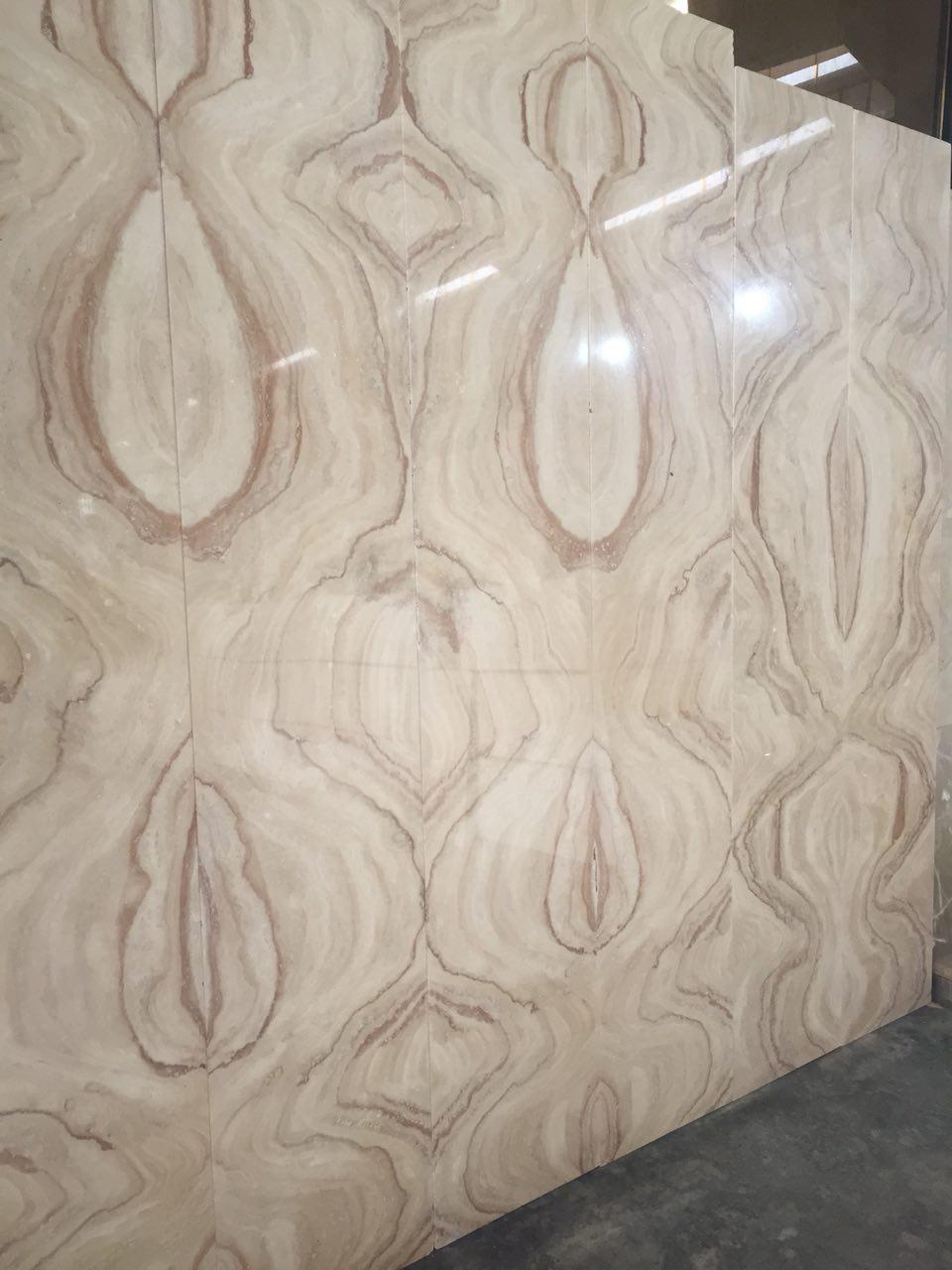- Tell : 09131114998
- Email : info@uranus-stone.com

Travertine and its properties
- 1399/07/15 ,
- stone industries Uranus
- 0 Comment
Travertine stone and its properties Chinese stone
Crystal stone, Uranus stone industry offers a variety of stones
Travertine is formed from the deposition of hot or cold water sediments in caves and a high percentage of its compounds include: calcium, stalactite and stagmite. Travertine is a porous limestone and is one of the most widely used stones in the construction industry. Travertine stones are mostly found in red, lemon, yellow, brown, gray, black and white colors and have random or no veins. One of the influential factors on the formation of color and design of travertine stones is its compounds such as iron, calcium and other impurities, and the less water-soluble elements of these sources, the lighter the color of the stone.
Advantages of Travertine Stone
Good strength, beauty and excellent polishing and other advantages of travertine stone have made the use of this stone in building facades very common. One of the good properties of this stone is its thermal and acoustic insulation, which the cavities inside the stone have created this property, and another advantage of the cavities in travertine is the increase in the strength of the installed stone, which penetrates the cement. Inside these cavities, the adhesion of the rock to the wall increases. The cavities in the travertine rock are a source of sedimentation due to the space occupied by the gases in the hot waters, which prevent the formation of a compacted rock mass.
Click to consult and buy different types of Crystal stones.
Disadvantages of travertine
Non-uniformity of color and design is one of the disadvantages of travertine and also its low resistance to cold. If the travertine stone is wet and the ambient temperature reaches freezing temperature, this stone will be crushed immediately and therefore during long-term storage of travertine cups in cold weather, they must be covered. Other disadvantages of travertine stone are relatively high water absorption. It is. This disadvantage also with the entry of resin into the market and its use during processing and polishing, reduces the amount of water absorption and one of its advantages is that the stone gets dirty later. Therefore, the quality of sub and resin used during processing have a significant impact on the shelf life and beauty of travertine.
Read more: The difference between Crystal stone and marble
Travertine in Iran
Due to the increase in demand, the per capita production of travertine in our country has increased in recent years. In the years before 1381, this type of stone was known as a cheap stone and was not considered in the domestic market until the resin entered the market and Replacement of resin instead of using putty and cement to fill surface porosity, the use of travertine stone was welcomed and its unique beauty along with a reasonable price has increased sales in the market. In the design of the facade of the building in the style of Roman facade All or most of the facade of the building is covered with travertine.
- Marble4
- Marble3
- Marble1
- Marble
- Marble stone
- Granite1
- Granite
- Granite Stone
- 1Chinese
- Chinese stone2
- Chinese stone1
- Isfahan marble
- Isfahan granite
- Travertine1
- Travertine
- Travertine stone
- Isfahan travertine stone
- Stone view1
- Building stone
- Stone facade1
- Stone facade
- Stone cleaning
- Artificial stones
- Natural stones
- Interior decoration
- Cleaning the stone
- Crystal
- Dolomite
- Calcite
- Quartz
- Graphite
- Hematite
- Simonite
- periet
- Manganese carbonate
- Lemonite
- Stone resistance
- Natural stone
- Artificial Stone
- Stone flooring
- Marble of the Emperor
- Dehbid cream marble
- Dehbid marble
- Persian Rose Marble
- Persian Marble
- Persian Rose Stone
- Marshall Black Marble
- Marshall Marble 1
- Black marble
- Marshall Black Stone
- Black Marshall Marble
- Spider black marble
- Spider marble 1
- Black Spider Stone
- Isfahan Chinese stone
- Black marble of Najafabad
- Najafabad marble
- Marble of Najafabad
- Black marble of Najafabad1
- Porcelain stone
- Gallstone
- Bath stone
- Stone toilet
- Aligudarz Chinese stone
- Qorveh Chinese stone
- Qorveh crystal stone
- Sirjan porcelain stone
- Sirjan crystal stone
- Plinth stone
- Duplicate stone
- Gabbro stone
- Gabor
- Black granite1
- Black granite
- Basalt
- Classic view
- Roman view
- Polymer stone
- Construction industry
